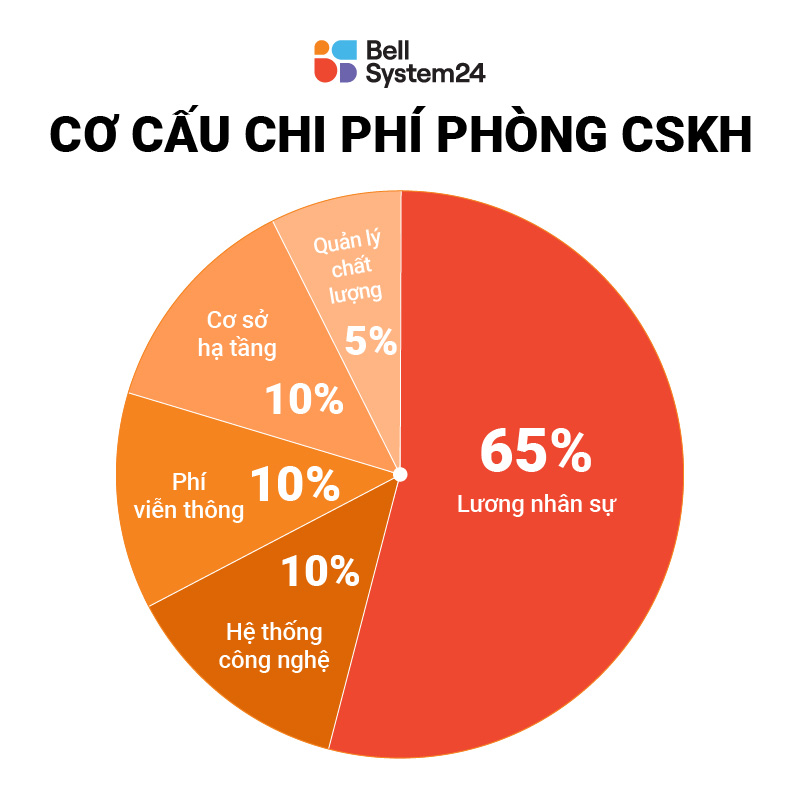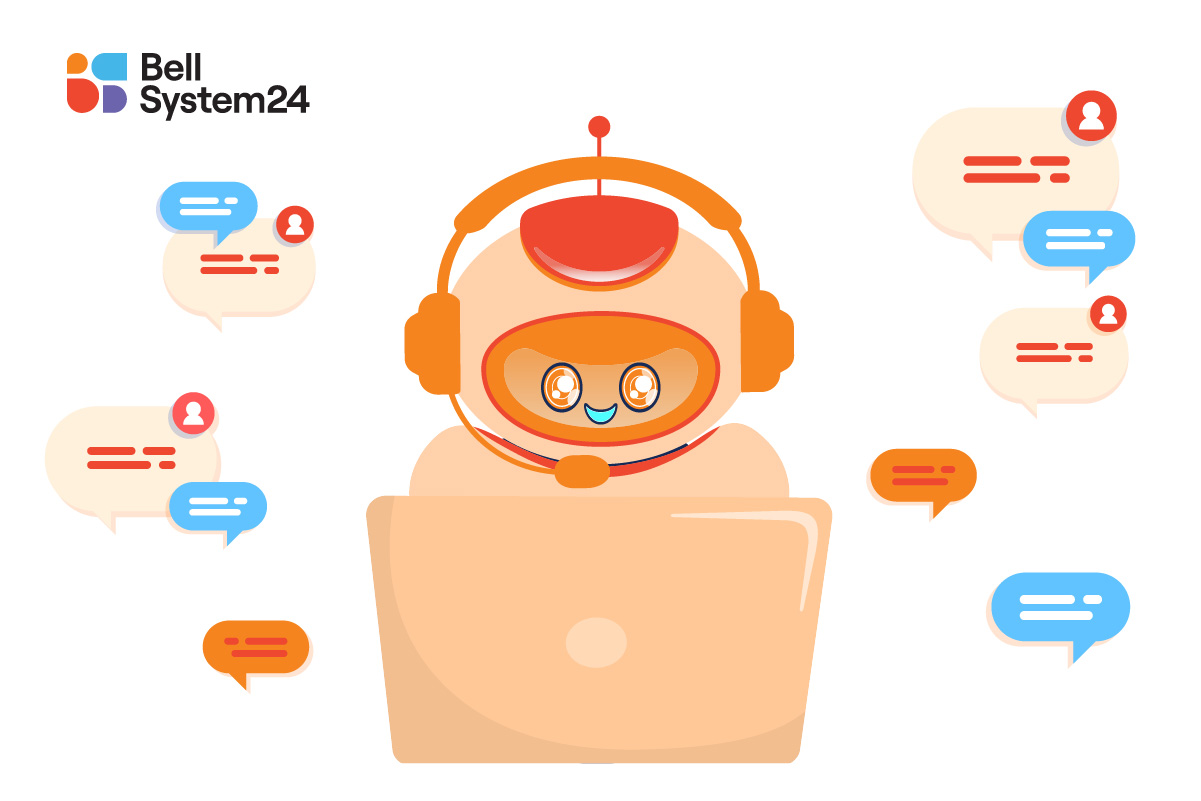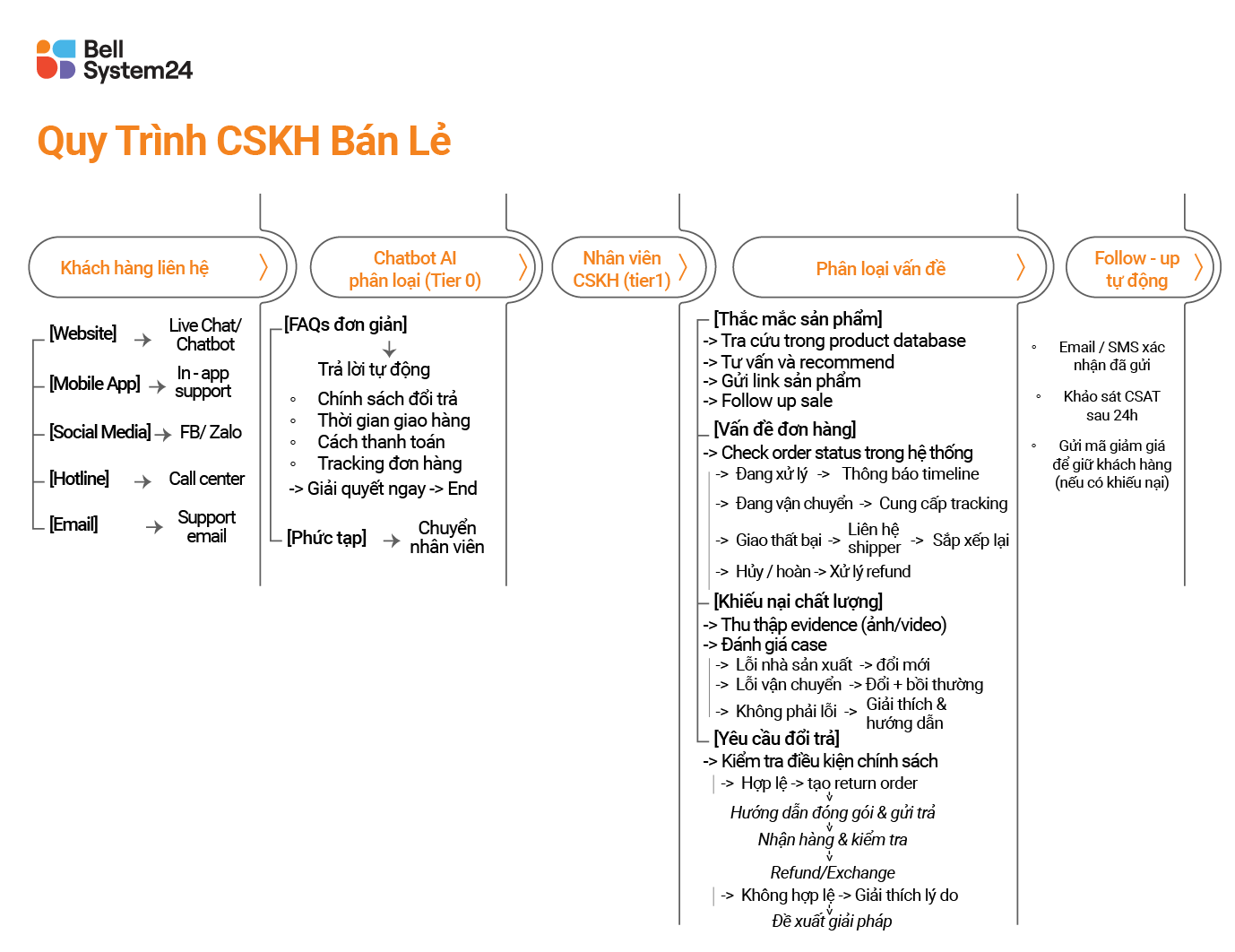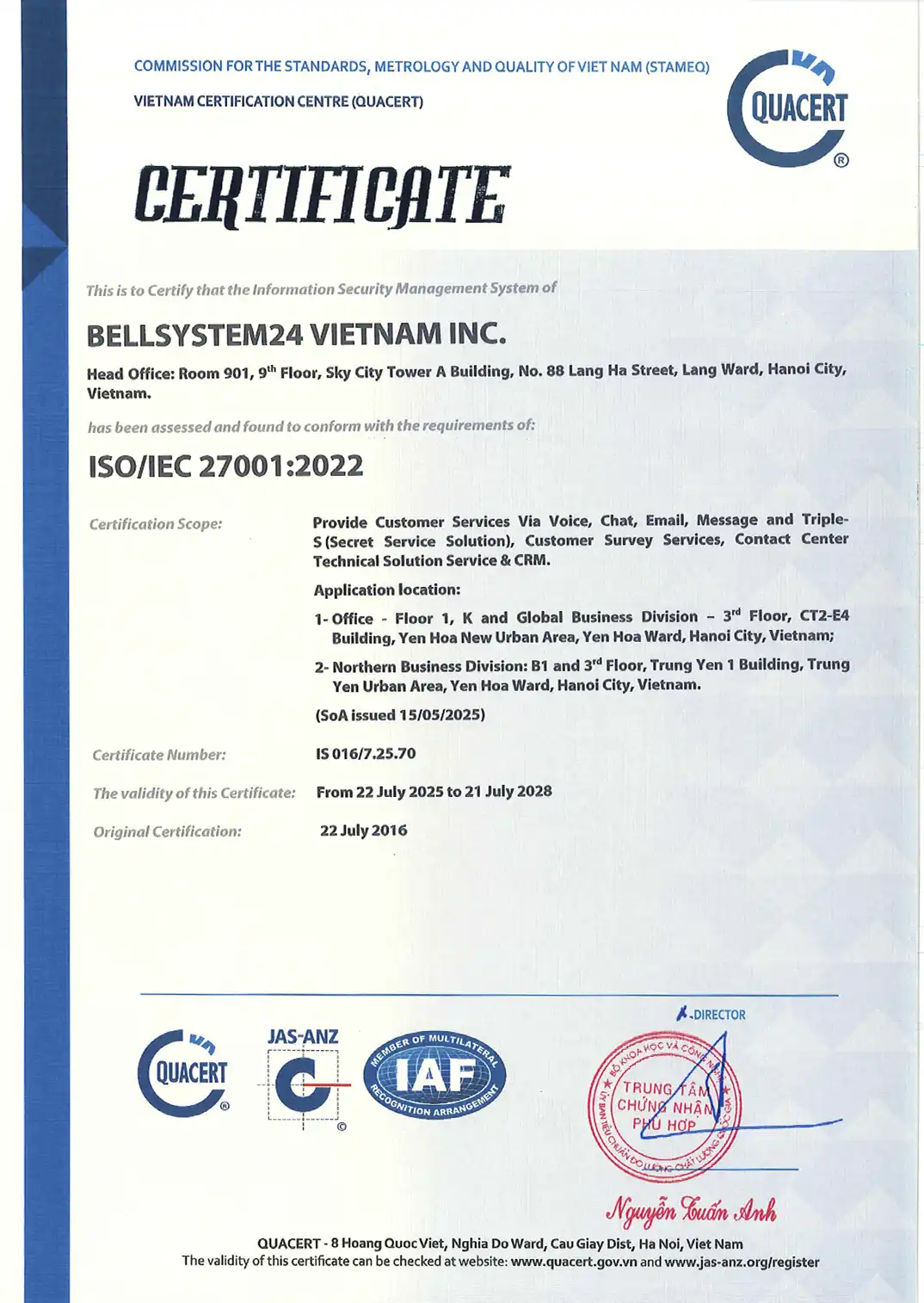In today's competitive business environment, reducing customer service costs is not only desirable but also essential for businesses to maintain profitability and achieve sustainable growth. Many companies are seeking smart solutions to cut operational expenses while still ensuring excellent customer service quality.

Why is it necessary to optimize customer service costs?
Customer service costs often account for a significant portion of a company's total operating budget. According to research by Bellsystem24 Vietnam, companies can save 20-40% of their costs by implementing appropriate optimization strategies. Saving on customer service costs does not mean reducing service quality, but rather finding more efficient ways to serve customers.
Common challenges in cost management
Businesses often face challenges such as high personnel costs, costly technology investments, and difficulties in measuring the ROI of customer care activities. In particular, with the growth of e-commerce and increasingly high expectations from customers, cost pressures are becoming even greater.
Where should you start to optimize costs?
To answer this question, analyze the cost structure of the customer service department. Below are five common cost categories.
1. Personnel expenses (~60-70%)
This is the cost category with the highest proportion. It includes:
- Base salary for Customer Service Representatives, Team Leaders, QA...
- Insurance costs, bonuses, benefits
-
Recruitment costs, initial and periodic training
This cost category can be fixed or fluctuate up or down depending on the company's usage needs.
2. Technology system (~5-10%)
- Call Center (PBX/IP-PBX/Cloud Call Center)
- Customer Relationship Management (CRM), Ticketing system
- Chat software, chatbot, email routing
- System integration costs (API, CRM, ERP)
3. Telecommunications costs (~5-10%)
Primarily with voice channels (outbound/inbound calls). For large customer service centers, domestic voice charges are significant if call volume is high.
Include:
- Telephone call charges (outbound & inbound)
- Rent a prefix (1800, 1900, SIP number)
- Internet bandwidth, IP Phone
4. Infrastructure & Facilities (~5-10%)
Include:
- Lease space (if in-house)
- Equipment: computer, headphones, desk and chair
- Electricity, water, maintenance, office supplies
5. Quality Management & Improvement (~5%)
Include:
- Recruitment costs
- Customer Satisfaction Survey (CSAT, NPS)
- Call data analysis tool, QA automation
- E-learning software, internal training
Based on the above cost groups, we can easily see the group Personnel costs are the group with the highest proportion of expenses. (60-70%) and this is also the group that needs to be optimized. However, unlike unplanned cuts, businesses need to strive to improve the performance of call center agents by providing them with knowledge platforms, support tools, and structured work processes to help them increase their efficiency. As a result, a call center agent can achieve 2-3 times the productivity, helping the business reduce personnel costs by hiring fewer people while still ensuring quality work.
Cost-saving strategies that are effective while still ensuring quality
1. Implement smart technology
Multi-tier chatbot and AI support
Instead of completely replacing employees, chatbot It should be designed as the first line of defense. The AI system can handle 65-75% frequently asked questions such as order checks, basic product information, and usage instructions. When encountering complex questions, the system will seamlessly transfer them to specialized staff, along with all the information provided by the customer.

Smart CRM integration
CRM System Modern systems not only store customer information but also predict needs and suggest solutions. This helps employees process requests 40% faster than traditional methods, while also personalizing the customer experience.
2. Optimize the process from start to finish
Apply the Lean Six Sigma methodology
Analyze each step in the customer service process in detail to eliminate non-value-adding activities. Standardizing the process helps reduce average processing time by 25-35 minutes without compromising service quality.
Build a comprehensive knowledge base
Create a continuously updated knowledge base, including FAQs, case studies, and solution templates. This not only helps new employees quickly get up to speed, but also ensures consistency in responses.
Set up a smart routing system
Classify and route customer requests based on complexity and priority level. Simple requests are handled by junior staff at a low cost, while complex issues are escalated to experts.
3. Develop an effective workforce
Multi-level training program
Instead of one-time training, implement a continuous training program with in-depth modules. Employees are trained in soft skills, product knowledge, and problem-solving techniques. This increases the First Call Resolution (FCR) rate to 85-90%.
See also: EXCELLENT CUSTOMER SERVICE SKILLS – HANDBOOK

Motivate and retain employees
The cost of recruiting and training new employees is often 3-4 times higher than retaining existing employees. Developing a reasonable compensation package, a positive work environment, and a clear career path helps reduce turnover rates from 20-30%.
4. Implementing the Self-Service Solution
Self-service customer portal
Build a website or application that allows customers to independently handle 70-80% of basic needs such as password resets, information lookups, and document downloads. The initial investment will be recouped within 6-12 months through reduced call volume.
Video tutorials and interactive guides
Create a library of high-quality instructional videos to help customers resolve issues on their own. Research shows that 73% customers prefer to research on their own before contacting support.
5. Analytics and data applications
Predict and prevent problems
Use predictive analytics to anticipate potential issues and proactively contact customers. This approach reduces complaint calls by 30-40% and enhances customer satisfaction.
Optimize employee schedules
Analyze historical data to predict call volume by hour, day, and month. This helps schedule shifts efficiently, reduce overtime costs, and ensure service level.
6. Quality management using technology
Speech analytics and sentiment analysis
Monitor and analyze 1001 calls using AI instead of only 5-10 calls as before. This helps detect quality issues early and improve them in a timely manner.
Real-time coaching
Provide suggestions and guidance to employees while interacting with customers through an AI assistant, helping to improve call quality and reduce processing time.
Balancing cost savings and service quality
The principle of "Quality First, Cost Second"
Many businesses make the mistake of trying to cut costs at all costs while forgetting the importance of quality. Save on customer service costs Effectiveness must be based on the principle of maintaining or improving service quality. Research shows that the cost of retaining an existing customer is only one-fifth of the cost of finding a new customer.
Smart investment instead of blind cuts
Instead of making arbitrary cuts, businesses need to analyze the ROI of each activity in detail. For example, investing in automation technology may cost $100,000 initially but save $500,000 per year in personnel costs while also improving customer satisfaction score from 7.5 to 8.2/10.
Outsourcing Model – A Smart Choice
When should you consider outsourcing?
Outsourcing is not the right solution for every business. Companies should consider this model when internal operating costs exceed 40% compared to outsourcing, when they need access to modern technology without making a large investment, or when they want to expand rapidly but lack sufficient personnel.
Bellsystem24 Vietnam – Your Trusted Partner
Bellsystem24 Vietnam, with many years of experience in the Call Center and BPO sector in Vietnam, understands the importance of balancing cost and quality. The company applies the "Smart Cost Optimization" model – optimizing costs intelligently without compromising service quality.
Conclusion
Save on customer service costs is a continuous process that requires a skillful combination of technology, processes, and people. Choosing a reputable outsourcing partner such as Bellsystem24 Vietnam not only helps businesses reduce operating costs but also improves service quality and creates a sustainable competitive advantage.
In the digital age, businesses that know how to intelligently optimize customer service costs will gain a significant advantage in the market. Start your optimization journey today to create long-term value for your business.







